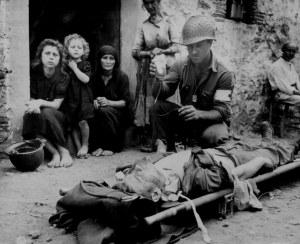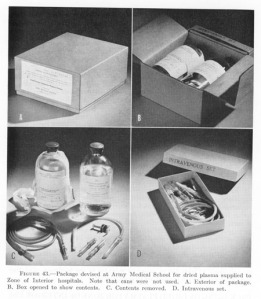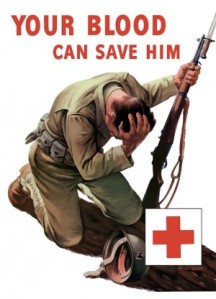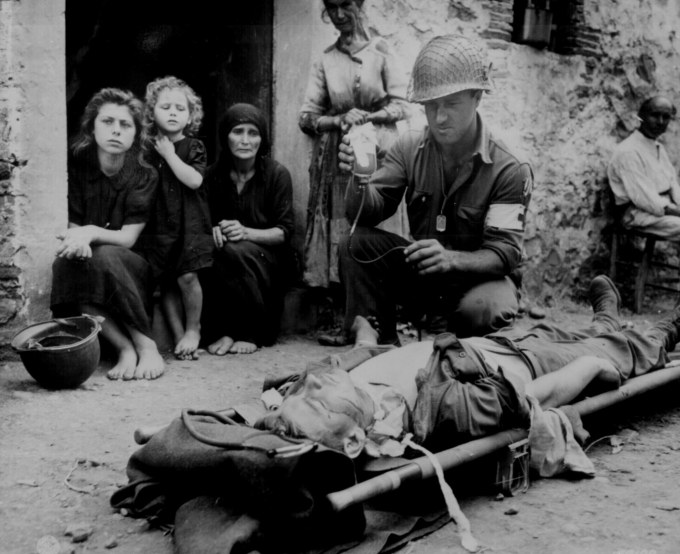Although blood transfusion was not invented during the World War II era, its development and modernization revolutionized health care and helped save thousands of lives on the battlefield and at home, both in America and overseas.
Blood transfusions were still largely experimental during World War I, and the first use of refrigeration to preserve blood supplies was not until 1920. The first blood bank at Cook County Hospital was opened in Chicago by Dr. Bernard Fantus in 1937. It was first used by battlefield surgical teams after the discovery that blood and plasma transfusions could help prevent wounded soldiers from going into shock.

In 1938, Dr. Charles Drew (a leading authority on mass transfusions) made the revolutionary discovery that blood plasma could successfully replace whole blood in humans, which was important because whole blood quickly spoils when in storage. He developed a technique in which to separate and preserve blood plasma, a method that was found to be extremely helpful to World War II surgeons in countries where the the death toll was high.
At first, liquid plasma was used rather than dried plasma, because time was of the element, and plasma took a long time to dry (not to mention it was extremely expensive!). As part of Drew’s method, the plasma was first processed, separated from whole blood via sedimentation, and diluted to a 50% concentration with a salt solution. Then the plasma was vacuum-packed into a specialized glass bottle from which it would eventually be dispensed (blood would not be packaged into plastic bags until after the war).

The American Red Cross finally organized its own Blood Donor Service in 1941, and agreed to sponsor a civilian blood donor service to support American soldiers overseas. It also developed a safe, sterilized system of testing and storing plasma for overseas shipment. By the end of the war, the Red Cross had collected over 13 million units of blood through the program and converted almost all of it into plasma.

After World War II, the United States continued its blood programs as a medical service available to hospitals across the nation. The system of blood banks grew exponentially, even though the Red Cross’s blood supply from volunteers was unable to meet national demands. This led to an emergence of for-profit blood collection centers which picked up where the Red Cross left off, paying people for their blood donations and distributing them as plasma for both medical and research purposes. America soon became a global leader in blood and plasma services as its system grew and improved over the years.
